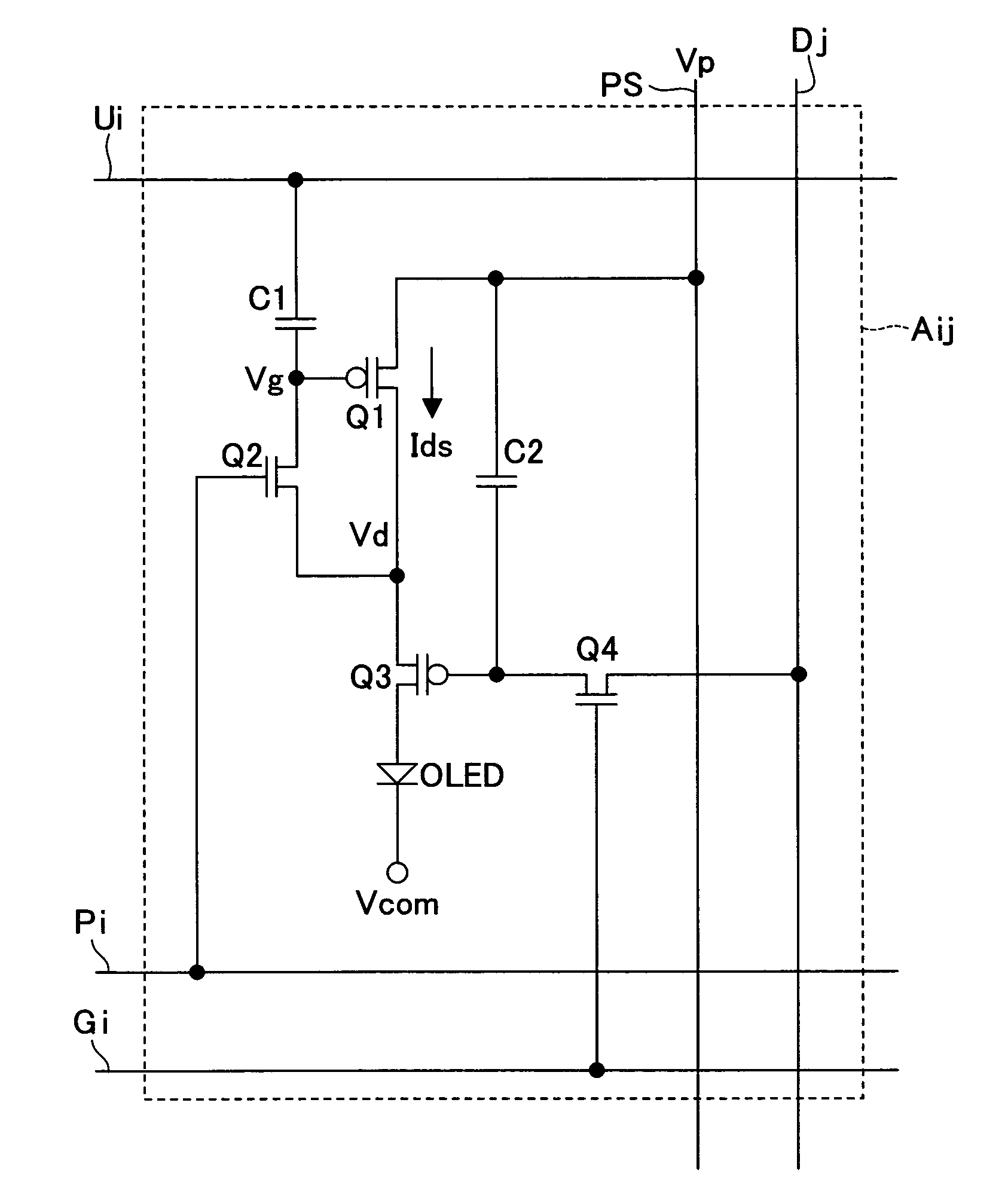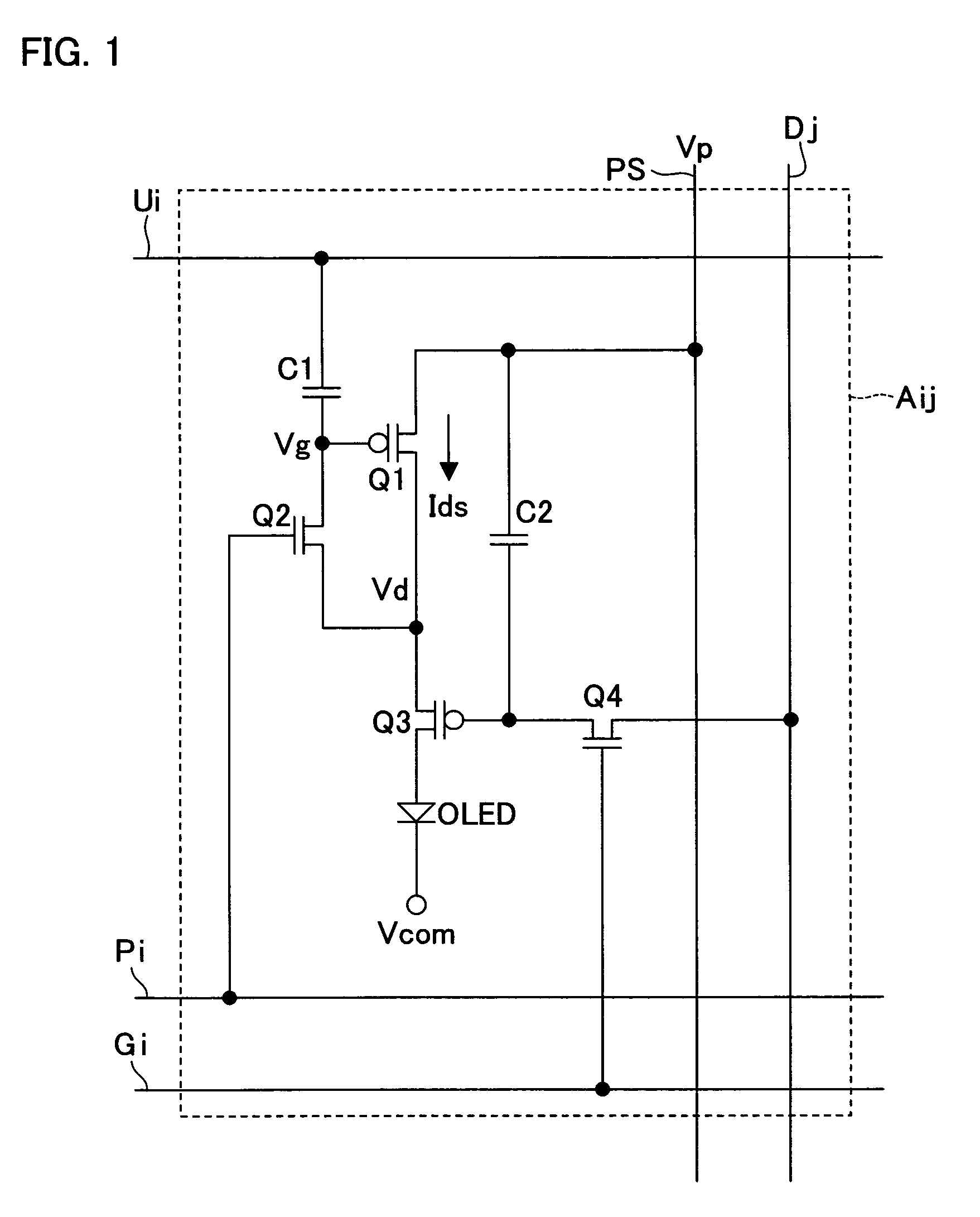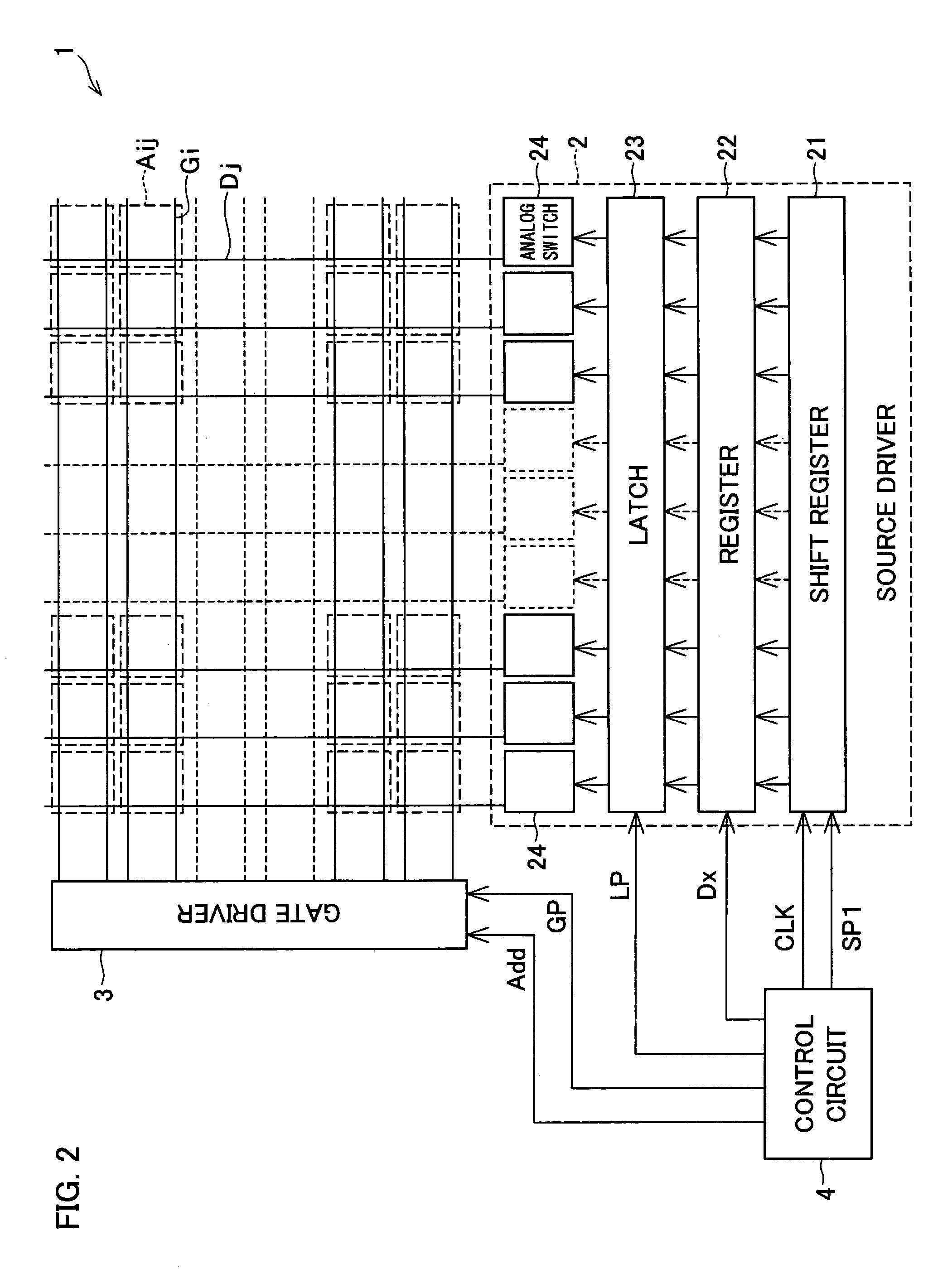Display apparatus
a technology of display apparatus and display screen, which is applied in the field of display screen, can solve the problems of increasing the number of scan lines, reducing the duration, and affecting the quality of the display screen, so as to shorten the time required
- Summary
- Abstract
- Description
- Claims
- Application Information
AI Technical Summary
Benefits of technology
Problems solved by technology
Method used
Image
Examples
embodiment 1
[0063]Firstly, Embodiment 1 is explained. FIG. 2 is a block diagram illustrating an entire circuit structure of an organic EL display apparatus 1 of the present embodiment.
[0064]As shown in FIG. 2, the organic EL display apparatus 1 includes (i) a plurality of pixel circuits Aij (i=1 through m; j=1 through n), (ii) a source driver 2, and (iii) a gate driver 3.
[0065]Provided in the organic EL display apparatus 1 are (i) a plurality of data wires Dj (data lines) parallel to each other; and (ii) a plurality of scan wires Gi that are parallel to each other and that are perpendicular to the data wires Dj, respectively. In respective intersections of the data wires Dj and the scan wires Gj, the pixel circuits Aij (pixels) are provided in a matrix manner. The gate wires Dj are connected to a source driver 2, whereas the scan wires Gi are connected to a gate driver 3.
[0066]For size reduction of the entire display apparatus and manufacture cost reduction thereof, it is preferable that the dr...
embodiment 2
[0107]Next, Embodiment 2 is explained. FIG. 6 is a block diagram illustrating an entire circuit structure of an organic EL display apparatus 11 of the present embodiment.
[0108]As is the case with the foregoing organic EL display apparatus 1, the organic EL display apparatus 11 includes (i) a plurality of pixel circuits Aij (i=1 through m; j=1 through n), (ii) a source driver 2, and (iii) a gate driver 3 as shown in FIG. 6. However, the original EL display apparatus 11 further includes a current driver 5 and a reference current source 6.
[0109]The current driver 5 includes a shift register 51 and a plurality of current driving circuits 52.
[0110]The shift register 51 receives a start pulse SP2 from a control circuit 4, and transfers the start pulse SP1 in synchronization with a clock SLK, and outputs the start pulse SP2, as a timing signal, from respective output stages. The clock SLK has a frequency f(SLK) that is different from a frequency f(CLK) of the aforementioned clock CLK (f(SL...
embodiment 3
[0136]Next, Embodiment 3 is explained.
[0137]As is the case with Embodiment 2, an organic EL display apparatus 11 of the present embodiment includes a plurality of pixel circuits Aij (i=1 through m; j=1 through n), a source driver 2, a gate driver 3, a current driver 5, and a reference current source 6, as shown in FIG. 6.
[0138]FIG. 11 is a circuit diagram illustrating a structure of each of the pixel circuits Aij of the present invention.
[0139]As shown in FIG. 11, the pixel circuit Aij includes an organic EL element OLED, transistors Q21 through Q26, and capacitors C21 through C23. Each of the transistors Q21 through Q26 is a TFT made of polycrystalline silicon or CG silicon. The transistor Q21 (first transistor) and the transistor Q25 (second transistor) are driving transistors. The pixel circuit Aij has such a circuit structure that the transistor Q21, the transistor Q25, and the organic EL element OLED (display element) are provided in series between (i) a power supply wire PS fo...
PUM
 Login to View More
Login to View More Abstract
Description
Claims
Application Information
 Login to View More
Login to View More - R&D
- Intellectual Property
- Life Sciences
- Materials
- Tech Scout
- Unparalleled Data Quality
- Higher Quality Content
- 60% Fewer Hallucinations
Browse by: Latest US Patents, China's latest patents, Technical Efficacy Thesaurus, Application Domain, Technology Topic, Popular Technical Reports.
© 2025 PatSnap. All rights reserved.Legal|Privacy policy|Modern Slavery Act Transparency Statement|Sitemap|About US| Contact US: help@patsnap.com



